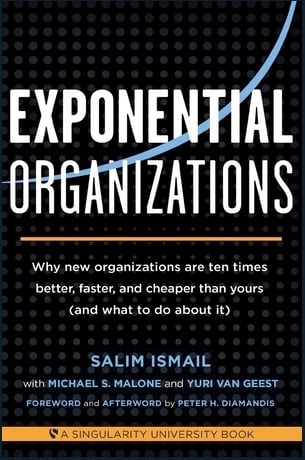There’s no getting around it. Today’s consumers hold the power to dictate business outcomes. But with more businesses struggling with their digital transformation initiatives, how can taking a customer-led approach to transformation lead to better results?
Insight: Many businesses are failing in their customer transformation and are struggling to implement their key initiatives.
Data: 44% of companies have already moved to a digital-first approach for customer experience. But 70% of these digital transformation initiatives did not reach their goals. (“State of Digital Business Transformation” 2018)
Key Action Point: The road to success entails leading your digital transformation initiatives with a customer-driven approach.
What Is Customer-Led Transformation?
Customer-led transformation is no longer just a goal for the future. In 2019, it is crucial to driving the success of your organisation now and into the future.
According to the State of Digital Business Transformation report,
- More than a third of organisations (44%) have already started implementing a digital-first approach to business processes, operations, and customer engagement.
- Some 19% are in the integration process of making operational and technology changes throughout the enterprise, and 18% are executing their digital plans and making process, operational, and technology changes on a department and business unit level.
- Just 7% of companies have already fully implemented their digital-first approach and are in the maintenance phase.
Despite high hopes on how customer-led transformation can improve business outcomes, many organisations are either unsure about how to implement it or are failing in their efforts.
Part of the reason for this is the lack of alignment with new capabilities and the organisation’s most critical success driver — the customer.
To succeed, digital transformation should focus on delivering a better customer experience, using digital to gain a better understanding of their pain points and behaviours, and integrating technology and new capabilities to shape this agenda.
According to Deloitte, customer-driven transformations aim to accomplish one or more of three primary paths for creating value:
- Adapting to changing customer expectations - This means tailoring business models and optimising process flows to address the customer’s changing needs and pain points.
- Delivering new forms of value to customers (new customer value) - This means always pushing to go above and beyond for your customers, whether it be in terms of your products and services, offering omnichannel engagement, or after-sales support.
- Tapping new types of customers - This means standing out in a way that retains your existing customers while attracting new ones.
.png?width=600&name=What%20is%20customer-led%20transformation_v2%20(1).png)
The Value of Customer Insights in Customer-Led Transformations
Many businesses claim that they are customer-centric. But despite their best intentions, most of them still spend more time looking inward. The first step to a successful customer-driven transformation is having the right customer insights to inform your strategy.
In a recent digital transformation survey by Constellation Research, 50% of C-level and executive respondents believe the goal of transformation initiatives is to reach and engage with customers more effectively.
With organisations bidding for better customer advocacy, gathering customer insights is essential to success. Without them, it is next to impossible to design and optimise the customer journey for the best experience.
According to Deloitte, customer-centric businesses that focus on digital insight are 60% more profitable than those that are not. Insight-driven customer experiences help businesses retain 89% of their customers as well.
The Role of Technology in Customer-Led Transformations
Today’s digital transformation leaders have successfully aligned their people, processes, and technology forward to success. One just cannot move forward without the other.
The path to customer-centricity entails having a clear understanding of the customer’s needs. To do this, having rich customer insights can make all the difference, and this is where digital and the introduction of new technology can play a critical role.
From data analytics to detailed customer reports, having the right tools helps give you a holistic view of your customer’s needs throughout every touchpoint, which allows you to design more personalised customer journeys.
If delighting your customers drives the success of your business, understanding and anticipating their needs should be your second nature. (Tweet this)
Helping everyone in your organisation to understand and acknowledge this need, powered by the right technology, allows you to gather rich customer insights that can inform your decisions and build a winning strategy.
Conclusion
Digital transformation is crucial to the success of your business. But focusing on technology alone without aligning with the needs of the most crucial parts of your business is just not going to cut it. This is why many businesses are unable to meet their most pressing digital transformation goals.
To accelerate growth, businesses must focus on learning and anticipating the needs of their customers, providing solutions to their problems, and using this knowledge to fuel progress and technological change throughout their organisations.
The challenge for organisations today is to lead customer-driven transformations that emphasise a better customer experience through a united front where their new capabilities, organisational culture, and processes work effectively together.
















